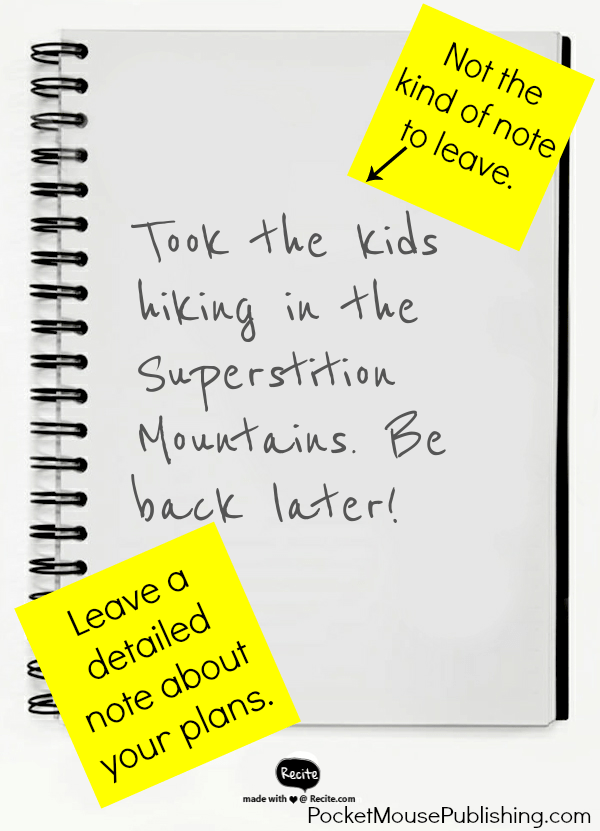As a part of learning to survive, appreciate, and maybe even love our new desert habitat, I took the children to a program called “Desert Survival” at the nature center of a large (3500+ acres) regional park yesterday.

We did not learn how to extract water from giant saguaros. Nor did we learn how to create a bow drill to start a fire. We didn’t even learn how to fight zombies with cholla cactus spines.
Instead, we learned about the importance of preparation and prevention. Proper preparation is something every hiker in every climate can do to prevent a survival situation from happening in the first place! As the fabulous ranger explained in at the beginning of the talk: his information does not make for popular TV shows, but it will keep you off the TV news!
Here are 3 new-to-me ideas for staying safe in the desert (or any hike!):
1-Instead of trying to find water, bring more water than you think you need. Yes, water is heavy. Yes, it can be awkward to carry. But in the desert, by the time you start to feel thirsty, you’re already becoming dehydrated. Bring the extra water.
In fact, bring an extra-extra bottle of water: Drink at your car until you feel satiated, then hike, then when you get back to the car, drink the rest of your extra-extra bottle.
2-A cheap emergency blanket has a variety of uses. The park sells them for $3 each and I plan to buy one for each of us when we go back for a hike. They look like these (excellent reviews & sold in a 10 pack). Not only can an emergency blanket keep you warm in the cold and cooler in the heat, it makes a great distress signal!
3-Leave a detailed note about your hiking plans: Where you’re going, where you’re going to park, when you plan to be back.
“Took the kids hiking in the Superstition Mountains” is not the level of detail that is going to get you found!

While I feel better about going for a family hike in the desert now, I guess we’re on our own for designing zombie-stopping cholla cactus weapons!
And if you’re ever in Arizona, stop by the Usery Mountain for a fabulous presentation or hike!
*This page may contain affiliate links which help support the site, click here & scroll to the bottom of the page for full disclosure.


 Did you walk by the light of a full moon last year?
Did you walk by the light of a full moon last year?

























